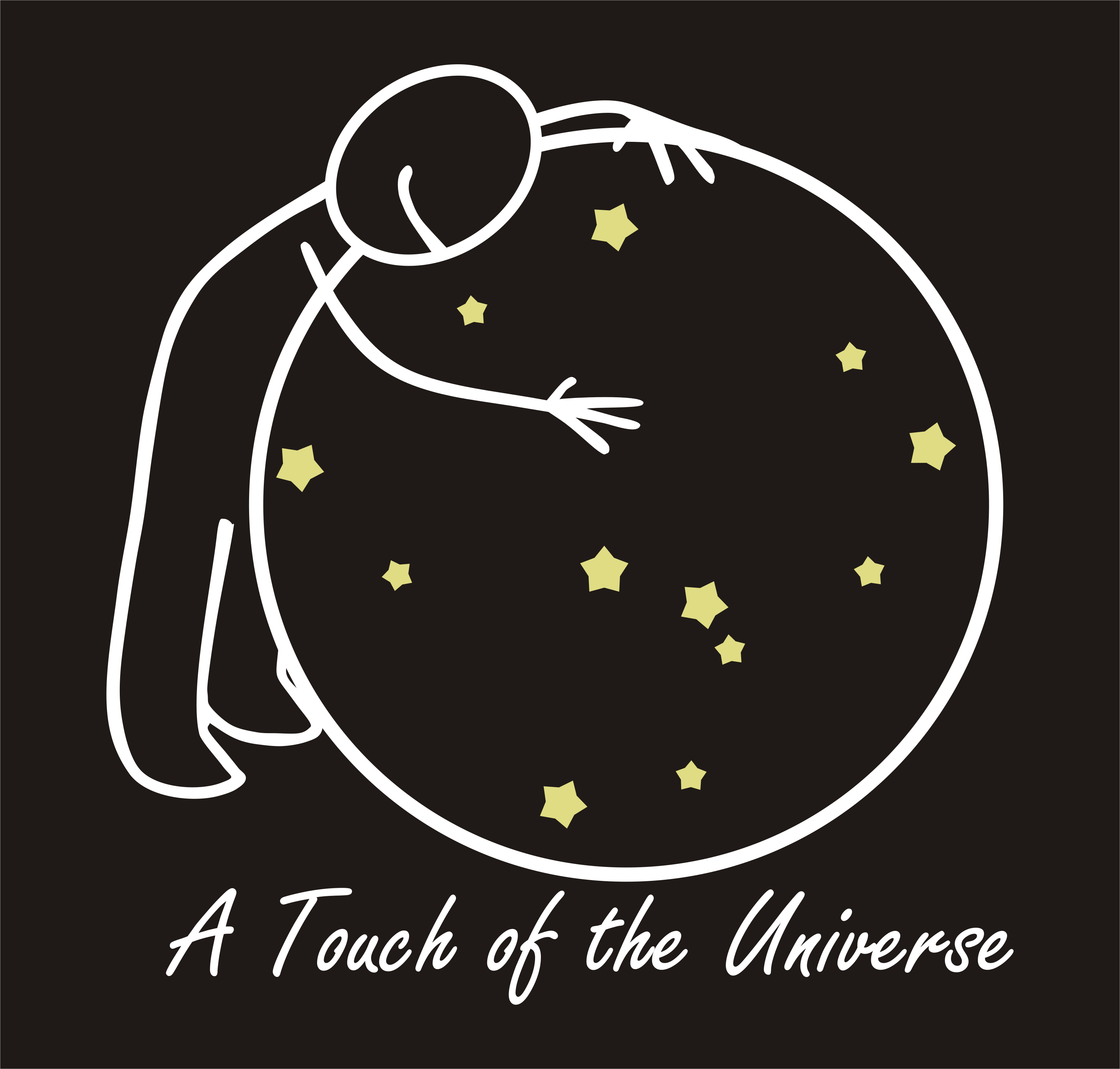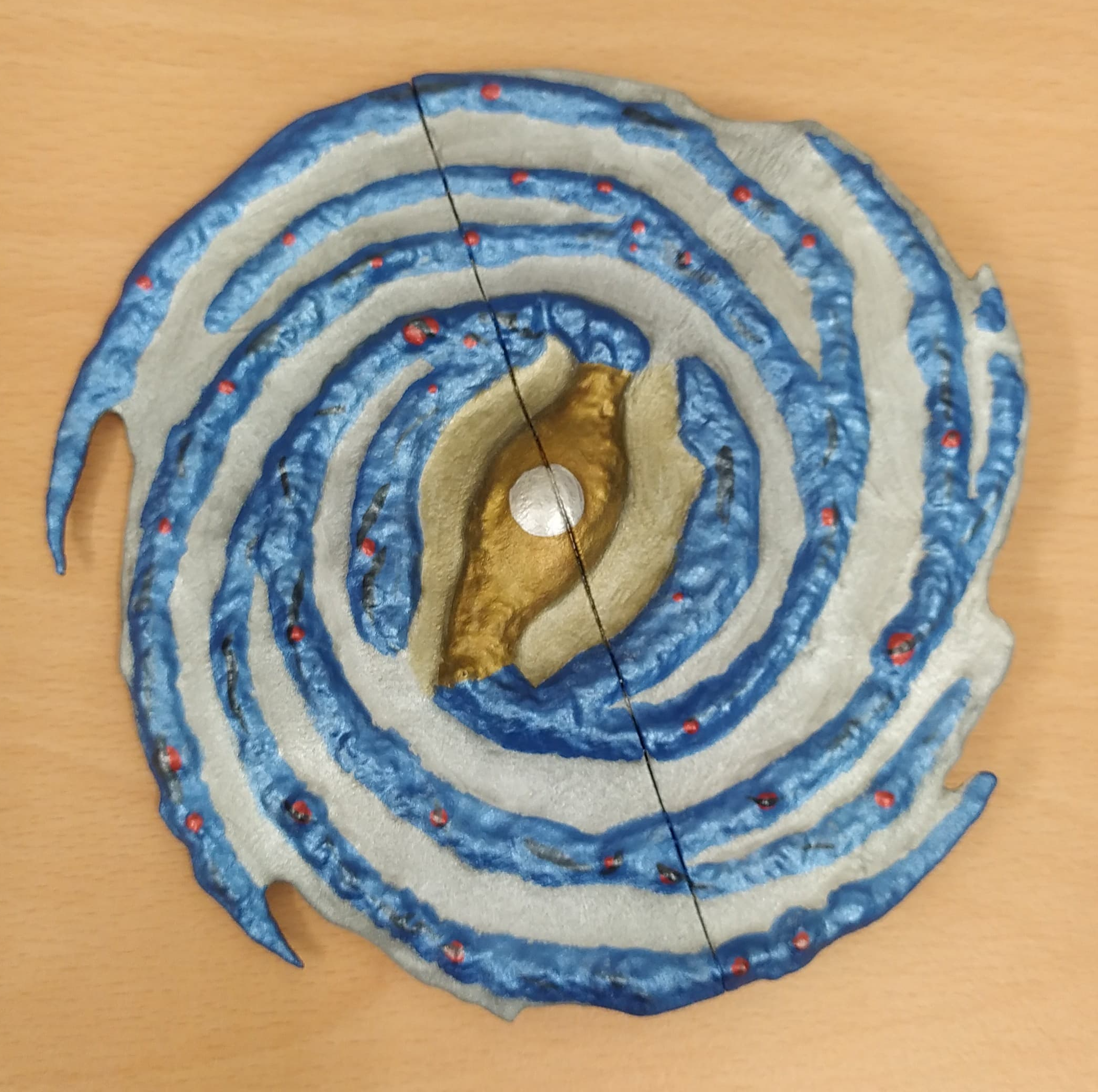Our Galaxy
The Milky Way is the galaxy we live in. It is of the spiral type and three main components can be distinguished: the central bulge, the disk with spiral arms and the halo, a sphere-like formation that completely surrounds the disk and the bulge. The disk has an approximate diameter of about 100,000 light years and is very thin, only 1,000 light years thick. It is not flat but has a slightly warped shape. Our Solar System is located in one of the outer arms of the disk, about 26,000 light-years from the supermassive central black hole, called Sagittarius A*, whose mass is estimated to be about 4.2 million times the mass of our Sun.
Knowing the precise shape of our galaxy is complicated since we are immersed in it and cannot see it from the outside. But with the data available, mainly those obtained by the European Gaia mission, and observing other galaxies similar to ours throughout the Universe, we can get a pretty good idea of what it is really like. Thus, it is estimated that our galaxy is home to at least 100 billion stars, although there could be as many as 400 billion.
The Galaxy looks like a barred spiral, with spiral arms that are subdivided into secondary arms, and a slightly warped disk. Barred spirals are distinguished by a bar-shaped formation composed of a large elongated concentration of stars, gas, and dust, which crosses the center of the galaxy. The spiral arms are the place where the largest amounts of stars, gas and interstellar dust in a spiral galaxy are found. The halo does not appear because it has been represented in another of our 3D models.
The 3D model
Our 3D model has been made from scientific data of the Galaxy obtained from surveys such as the one carried out by ESA’s Gaia space mission.
The set of spiral arms defines the disk of the galaxy, which in the case of the Milky Way is not flat but slightly warped. Several structures can be distinguished in it:
- Smooth areas between the arms, places where there is less abundance of gas and dust
- The galactic nucleus, in the center, shaped like a spherical bulge. It is where the central black hole, Sagittarius A*, resides.
- The central bar of stars, gas and dust, an elongated structure that extends from opposite sides of the nucleus
- Two main spiral arms, which start at the ends of the bar
- Secondary arms, which are subdivisions of the two main arms. These are regions with a lot of relief, where we will find protuberances that represent stars with a much larger size than they would really have if they were on the correct scale in relation to the size of the disk.
This work has been carried out with a grant from the R&D&I ‘Proof of Concept’ 2022 (PDC2022) call for projects, financed by the European Union through the NextGenerationEU Recovery, Transformation and Resilience Plan. Project’s reference: PDC2022-133930-I00.

